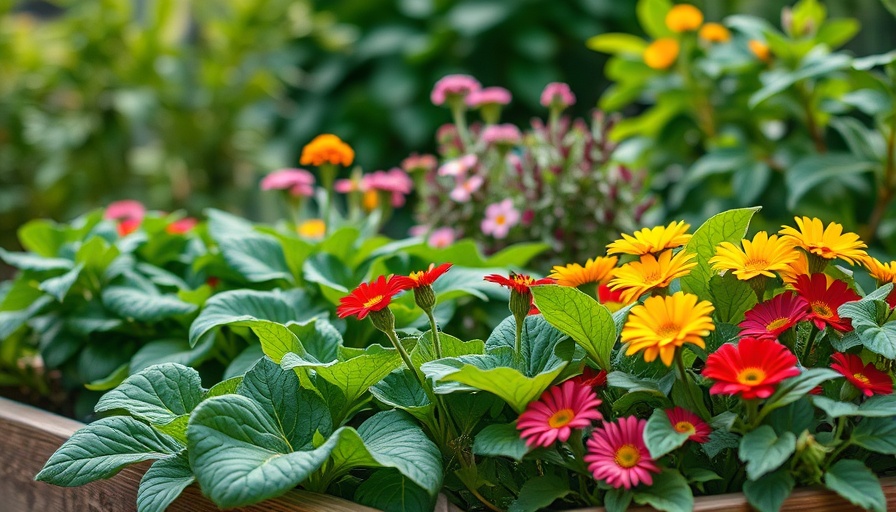
Understanding Regenerative Vegetable Gardening: A Path to Sustainability
Regenerative vegetable gardening is more than just a trend; it's a conscious shift towards sustainable practices that nurture both our plants and the environment. By focusing on creating a garden ecosystem that mirrors nature's rhythms, at-home gardeners can contribute plays a pivotal role in fostering biodiversity. Let’s explore how you can implement these practices in your vegetable garden to grow healthy food while giving back to the earth.
Soil Health: The Foundation of a Regenerative Garden
Soil health is arguably one of the most crucial aspects of regenerative gardening. Healthy soil is teeming with microorganisms that perform essential work, breaking down organic material and making nutrients available to plants. If you’re struggling to grow vegetables, check your soil's condition first. Improving it through composting is a simple and effective way to boost fertility. Remember, add compost regularly to enrich the soil and enhance its structure. Avoiding tilling and letting the organic matter decompose naturally on the soil surface can create a self-sustaining environment that requires minimal interference from you.
Water Conservation: Maximizing Resources Wisely
In regenerative vegetable gardening, effective water management is paramount. Implementing strategies like rainwater collection, drip irrigation, or creating wicking beds helps ensure that your plants get the hydration they need without waste. These systems not only conserve water but can also maintain soil moisture levels, reducing the need for frequent watering sessions. The aim is to mimic natural water cycles, giving your plants what they need, when they need it.
Types of Regenerative Vegetable Gardens to Explore
There are various types of regenerative vegetable gardens you can experiment with:
- Hügelkultur: This involves building raised beds comprising decaying wood, which provides nutrients and retains moisture.
- Wicking Beds: These beds utilize a reservoir system to ensure plants receive consistent moisture.
- Food Forests: A layered approach to gardening, food forests mix fruit trees, vegetables, and groundcover plants to create a productive ecosystem.
Wise Plant Selection: Choosing Compatible Crops
When planning your vegetable garden, consider planting a mixture of annuals and perennials to enhance biodiversity. Certain vegetables thrive better when planted together due to complementary growth patterns. This approach, known as companion planting, keeps pests at bay and promotes the health of your plants. Examples include planting tomatoes alongside basil or carrots with onions.
Creating a Harmonious Ecosystem: Encourage Beneficial Wildlife
By integrating features that attract pollinators and beneficial insects, your regenerative garden can become a vibrant habitat. Plant flowers that appeal to bees and butterflies, and avoid synthetic pesticides to keep these vital creatures coming back. Incorporating native plants is not only beneficial to local wildlife but also typically requires less maintenance and watering, making your garden even more sustainable.
Take Action: Get Started with Your Regenerative Vegetable Garden
Now that you have a blueprint for regenerative vegetable gardening, it’s time to take action! Start small by enhancing your soil with compost, selecting companion plants that work harmoniously together, or implementing an irrigation technique that conserves water. Every step you take contributes to a healthier planet and a bountiful harvest.
 Add Row
Add Row  Add
Add 




Write A Comment